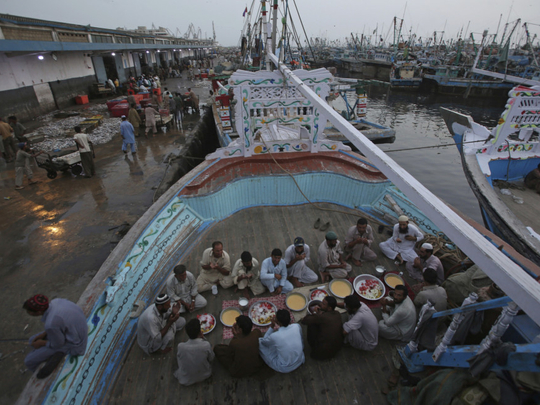
This week’s amendment of Pakistan’s constitution by the country’s parliament to merge seven rugged regions along the Afghan border with the rest of the country finally ended an obvious anomaly.
The regions together known as the tribal areas were anchored on practices that preceded Pakistan’s creation in 1947. One of the more obvious and widely cited anomaly referred to the idea of collective punishment. Previous status of the tribal regions earned nicknames such as ‘Pakistan’s wild wild east’ or ‘Pakistan’s badlands’. Though the constitutional amendment still needs to be followed by a number of long awaited steps, it has nevertheless brought about an important constitutional change.
Many of Pakistan’s foreign critics in the past routinely challenged the country’s rulers for their failure to tighten government controls across the tribal regions. There were frequent accusations of Pakistan turning a blind eye to the emergence of safe havens in the region, that were allegedly used by militants who regularly attacked targets in Afghanistan and retreated to Pakistan’s tribal regions for rest and recuperation.
Such accusations especially coming from the US at times appeared to be exaggerated. America ran one of the world’s longest running and most expensive wars in Afghanistan and remains engaged in that conflict without a victory. To accuse Pakistan’s tribal areas for principally causing effectively a half defeat in Afghanistan, simply overlooked the gaps in Afghanistan itself that have aided in prolonging the conflict.
Notwithstanding the making of history with the constitutional amendment, Pakistan must appreciate the legal change as more of a vital beginning than an achievement. In many ways, the challenges surrounding the tribal areas reflect poorly on the state of affairs across Pakistan.
If the inhabitants of the tribal areas have been deprived of basic needs notably water, power, education and health care, they are tragically not alone in leading lives of such despair. Across large cities like Karachi or parts of Lahore, the local population in some of the most run down areas are surrounded by similar gaps in their daily lives.
And the manner in which the constitutional amendment was brought about must also create ample room for suspicion. It finally happened with just about a week left before the government’s tenure was due to end, before Pakistan’s parliamentary elections due by the end of July.
Going through the coming election campaign, it is inevitable that Prime Minister Shahid Khaqan Abbasi’s Pakistan Muslim League-Nawaz or PML-N effectively led by former prime minister Nawaz Sharif, will count the constitutional amendment among its success stories. However, exactly why was the change left till the close of the government’s tenure must create plenty of room for suspicion. A safe conclusion could well be that this decision was driven more by the compulsion of adding yet another number to a rather unimpressive record of official success stories than changing Pakistan for the better.
Broadly in relation to Pakistan’s past, present and future outlook, questions must be raised once again over the government’s priorities in relation to the gaps surrounding parts of the country. The sense of despair among inhabitants of the tribal areas and the under development of this region is partly the consequence of official priorities too.
The past five years under the PML-N’s rule have witnessed the clear emergence of an official obsession with stuff about bricks and mortar rather than human needs. It’s therefore hardly surprising that official policies during recent years have enhanced the risk of further dividing Pakistan along the lines of income levels than ever before.
Such divisions are known to have contributed to economic and social upheaval in other parts of the world too. The case of Latin American countries best articulated by some of that region’s brightest economists is a telling case in point.
While parts of that region saw impressive new investments flow in during the 1950s and 1960s aided by fresh business interest, other areas close by remained poverty stricken. That very obvious societal divide eventually contributed to unrest in parts of that region.
The obvious failure by the government whose tenure is now ending to respond to the needs of Pakistan’s poverty stricken population, has indeed laid the ground for future upheaval. Beyond the inclusion of the tribal areas in Pakistan, it is vital that human needs across the country are assessed afresh on an urgent basis.
The now departing government has saddled Pakistan with more debt during its five-year tenure than any other ruling dispensation over a comparable period in the nation’s 70-year history. Yet, the gaps in spite of this unchecked growing indebtedness are obvious nowhere more than across Pakistan’s poorly served rural areas and the large number of urban slums.
A turnaround for the country must be built upon addressing the socio-economic crisis that has kept poverty levels high. As Pakistan’s mainstream population struggles with its daily challenges, absorbing the tribal areas in the country’s national fabric must only be seen as a beginning and of course a long delayed one.
Farhan Bokhari is a Pakistan-based commentator who writes on political and economic matters.










